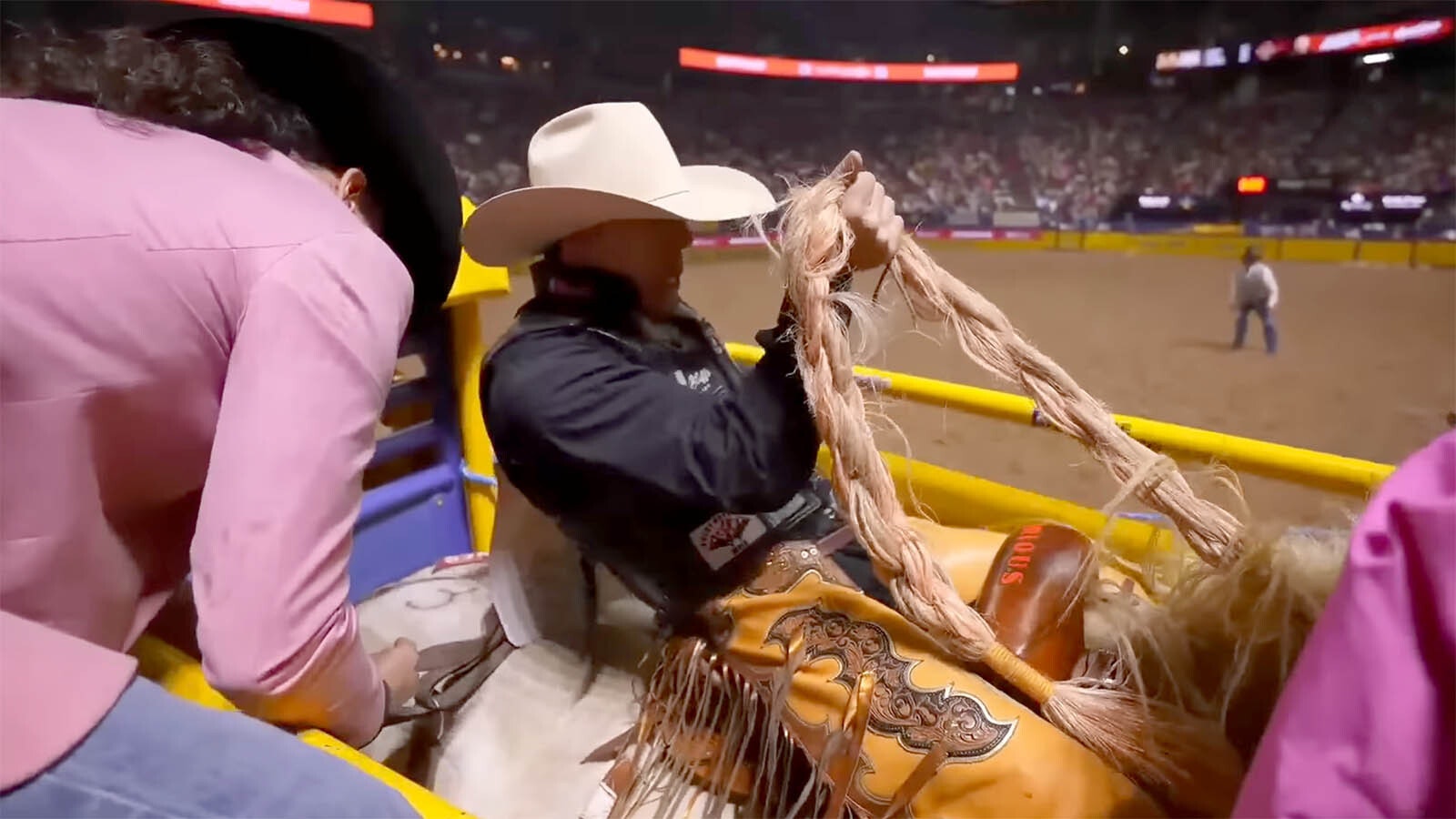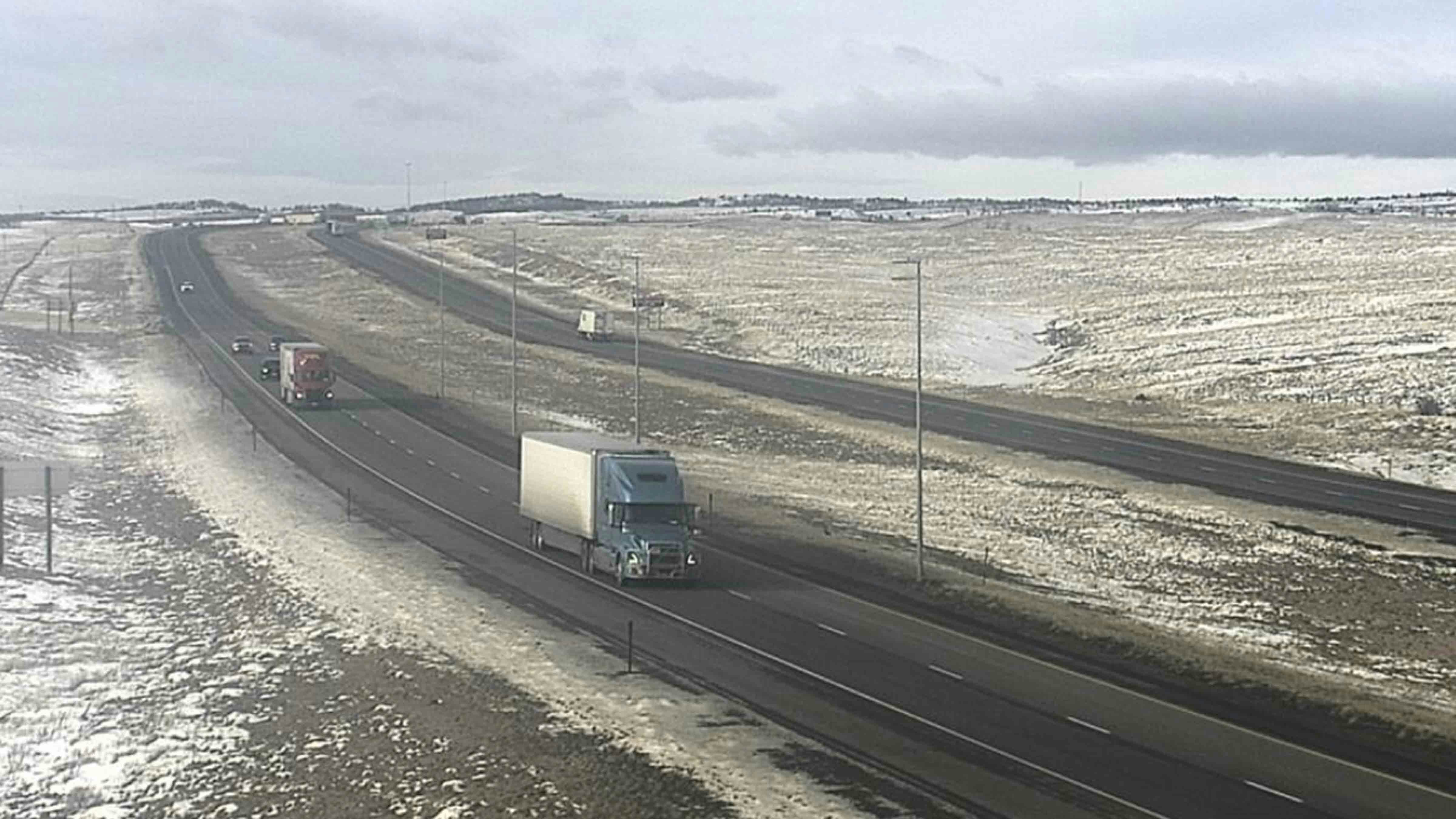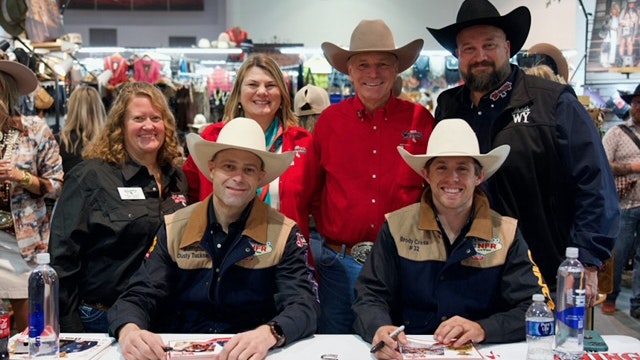THERMOPOLIS — As David Osmundsen stoked his hand forge with coal, the Wyoming blacksmith is proof that perseverance pays off. After getting sidetracked for 45 years, he is finally making the flintlocks that first got him into the ancient trade in the 1970s.
There’s just something about using up to 3,500-degree heat, muscle and finesse to make hardened metal do what you want it to.
At Wyoming Discovery Days in Thermopolis, one of these flintlocks was on display as he demonstrated the art of blacksmithing. He also make some of what distracted him all those years ago — hand-forged nails.
Dressed the part of an early 1900s blacksmith complete with suspenders, round spectacles and a large, bushy handlebar mustache, Osmundsen heated up his forge, stirred the coals and turned the hand crank, flames leaping into the air.
“With this coal that I am using, we can get this fire up to 3,500 degrees,” Osmundsen said. “The steel burns at 2,500 degrees so there is about 1,000 degrees in there that could burn the material.”
Osmundsen uses hundreds of techniques and skill sets that have been used by blacksmiths for over a thousand years, although he has the power hammer and other modern equipment at home for larger projects.
When out demonstrating the trade to the public, he will bring his hand forge and show people how life was before electricity.
The Foundation Of Blacksmithing: The Nail
To create a hand-forged nail, Osmundsen must first heat the nail blank in the coals until it is bright orange. Once he judged it to be hot enough, he took it out of the fire and over to his anvil.
The high-pitched sound of hammering on metal filled the air as the patient blacksmith drew out the shank with each measured blow. Next, he created a set down at the desired length of the nail, which is a blacksmith term for bending the steel at the point where they want to break off the metal. Osmundsen then returned the bent steel to the coals
Once more, the steel lit up and Osmundsen twisted the end off of the bar and returned to the anvil where he pounded the head on the nail. He quenched the final product in a tub of water and with his bare hands, showed off his finished product.
“My formal schooling is in gunsmithing,” Osmundsen said, as he turned the nail over in his hands. “At the time I was building flintlock muzzleloading rifles, and I wanted to build some of the iron parts by forging them myself.”
This interest led him to a year-long internship with a blacksmith in Colorado. Osmundsen started having fun with all the different things he could do with his new trade and the flintlock was set to the side for nearly 50 years.
“I never really settled down and made those gun parts,” he said. “But now, I am semi-retired so I'm starting to build forged parts for flintlock rifles again.”
He is at his home forge nearly every day, although he admits the rifle is only one of many projects he is working on. As he hand forges the back plate, trigger guard and trigger for his flintlock rifles, he has other irons in the fire, including a blacksmith school in Buffalo.
Back To School
Located in downtown Buffalo, the Arrowhead Forge School of Blacksmithing attracts people of all ages from around the world. Osumundsen wrote his own curriculum 20 years ago, and the classes range anywhere from one to four weeks.
He accepts students as young as 12 to work at the forge. Most have never even been in a shop before. By the end of class, each student will leave with something they made themselves in a coal-fired forge heated to 2,000 degrees.
“The most popular class is the beginning class,” Osumundsen said. “You learn all the basic skills while you're making things, so you're making nails and hooks and some handheld tools. Then we take those tools and turn around and make a grilling fork with a twisted handle or a bottle opener. There's a lot of skill sets involved in making that.”
New Excitement For The Old Arts
Blacksmithing is not the only traditional trade that is seeing a comeback in recent years. Many of the historic trades are being revitalized and Megan Stanfill of the Alliance for Wyoming said that there is a huge need for these trades.
“There’s been such a lack of skilled tradesmen to actually perform work on historic structures and historic spaces,” Stanhill said. “The trades are seeing a resurgence across the board. Kids are graduating high school and not only are they going to trade school, but we are seeing these kids pursuing the historic trades like carpentry and blacksmithing.”
Osmundsen is excited to see the interest. When he first apprenticed as a blacksmith, there were not many around who still knew the trade and, with popular shows like “Forged in Fire” highlighting the ancient craft, he is seeing a surge in people wanting to learn the trade.
“We are in a big, big Renaissance as far as blacksmithing and any of the traditional trades, whether it's building log cabins or stonework,” Osmundsen said. “You have people flintknapping, others are making drums, and you even have people cooking over open fires.”
Untethering From The Modern World
Both Stanhill and Osmundsen believe that this revival of the traditional trades is due, at least in part, to people being tired of being tied to technology in every aspect of their lives.
“Part of society has decided they've gone far enough with technology,” Osmundsen said emphatically. “If they could figure out how to get rid of the smartphone, go back to a black phone on the wall, they would do it. But sadly, the way we've progressed, we depend on some of this technology way too much. That's gonna bite us in the butt someday.”
Stanhill agrees and is being proactive in reaching out to those who may have an interest in the historic trades ranging from blacksmithing to the much-needed masonry arts. She has been reaching out to the trade schools and national organizations that host preservation trade conferences across the country so that Wyoming high school students know that these historic trades are an option.
“I think the interest in the trades is because people want to work with their hands,” Stanhill said. “So many job prospects nowadays are about working remotely from a computer in front of a screen all day. These kids still crave doing things with their hands and our high school students are looking for alternatives.”
As he works steadily away at another nail, Osmundsen is hopeful for the future of the traditional blacksmith trade. He also still intends to finish his flintlock rifles - although he may need to build new tools in order to finish the project he’s been working on for 45 years.
Jackie Dorothy can be reached at jackie@cowboystatedaily.com.













